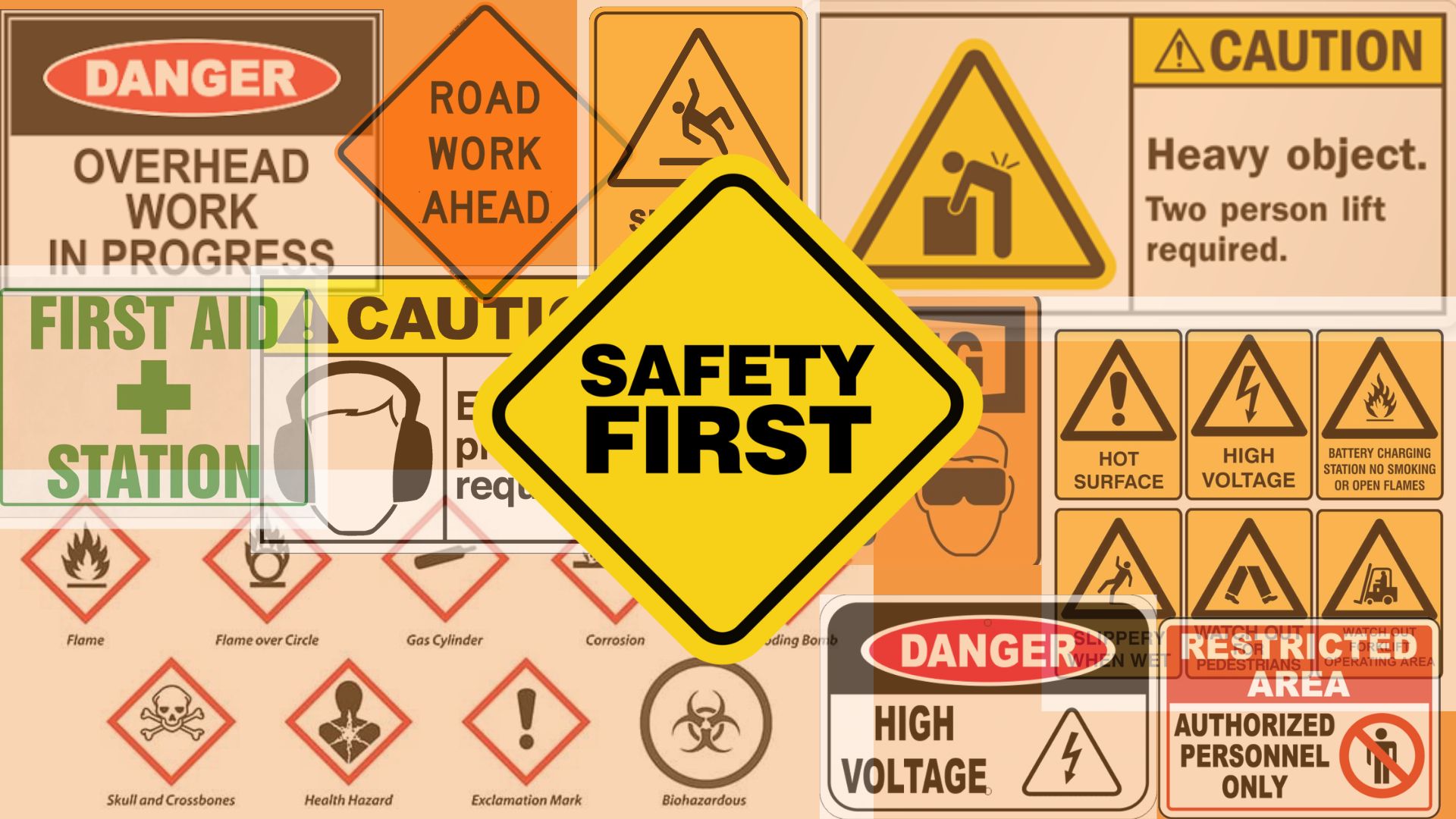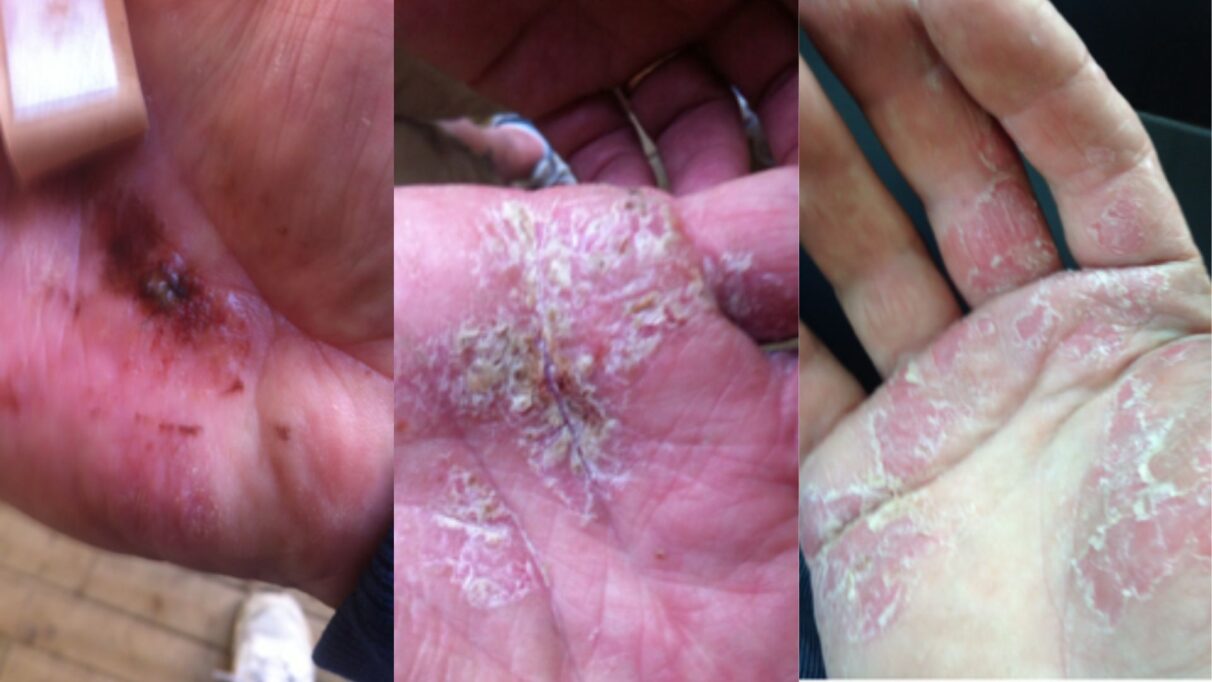Staying safe on the job

caption
Common safety signs remind workers to take precautions.More can be done to keep Nova Scotians safe at work
At first, Aaron Kearley thought the blisters were just a bad case of workers’ hands. He often worked outside, rain or shine, handling cold sheet metal, and would come home with dry, cut-up hands.
When treating them at home didn’t work, he was sent to a specialist, and eventually diagnosed with allergic contact dermatitis. The condition is caused by repeated exposure to an irritant. It usually manifests as an itchy rash or, in severe cases, blisters.
Kearley had worked with sheet metal for more than 25 years without experiencing health issues (besides the cut-up hands). Although personal protective equipment was mandatory, he and many of his coworkers often went without one crucial piece: gloves. He later realized repeated contact between his hands and the rubber grips on his tools made him allergic to the rubber grips. Now, even minimal contact could cause an outbreak.
Before long Kearley had developed a huge list of allergies: both black and grey rubber (of which most plastics are made), chrome, certain chemicals and ink, just to mention a few.
“I just felt useless,” Kearley said. “The hardest thing was to tell my children.”
Kearley stopped working in 2014 to treat his dermatitis; he was in pain and needed to minimize contact with allergens. Even at home, though, there were challenges. He couldn’t do chores like washing dishes because his hands couldn’t be in water for long periods of time, or peel potatoes because of their acidity. Doing home maintenance meant using tools again. Coupled with the stress of waiting two years for his injury claim to be accepted by the Workers’ Compensation Board of Nova Scotia, Kearley developed fibromyalgia during this time, another chronic pain disorder. Kearley said that he felt like he had lost his identity. He fell into a depression.
Then he started working to manage his illnesses. Once that was going better, he started volunteering with Threads of Life, which supports families after a workplace injury, illness or death. He relied on the charity during his own recovery.
“I was always caring for people, always tried to look out for people. This is my way to give back.”
Injury statistics from Nova Scotia in 2023
Source: Workers’ Compensation Board of Nova Scotia
Workplace injuries have been declining in Nova Scotia for several years. While that sounds good, there were still 20,487 people in 2023 who were injured at work. That’s about one every 24 minutes.
It’s sometimes hard to believe that in 2024 we struggle with occupational health and safety. But working in less-than-ideal environments is the reality for many Nova Scotians – at least for the 4.5 per cent of the working population that received compensation from Workers’ Comp last year. And less than ideal doesn’t mean highway crews working through the rain, or cooks working with sharp knives. It means dangerously low staffing levels at correctional facilities, lapses in safety training for construction workers, and nurses having to use outdated or broken equipment.
And gone are the days when most workplace injuries happen in manufacturing. Healthcare and social services have the highest injury rate per industry, nearly double manufacturing, in second place. Construction, retail and government services follow up.
Janet Hazelton, president of the Nova Scotia Nurses’ Union, said common injuries for nurses are sprains and strains from everyday tasks such as lifting patients, catching them if they fall and pushing and pulling stretchers. Hazelton said staffing shortages and long hours tire people out, make them even more likely to be injured, and less likely to take time off.
“Nurses want to go back to work,” she said. They “feel an obligation to their patients.”
Hazelton said nurses often work through injuries to take care of patients, and that they feel an “obligation to the patient first, obligation to themselves second.”
Mental strain is also a significant concern for nurses. Workplace harassment, often in the form of yelling from upset patients and families, is common in health care, and can add to already stressful situations and environments.
Nova Scotia Government Employees’ Union first vice-president Hugh Gillis attributes higher stress levels to staff shortages and lack of work/life balance. Gillis comes from a 20-year background as a correctional officer, and said he experienced firsthand how unsupported people in that industry can feel.
“I realized over the years that at the end of the day, all you had was yourself and your folks around you.”
Gillis said staffing shortages put extra pressure on correctional officers and can lead to dangerous situations for everyone in the facility.
In 2023, the rate of physical injuries and illnesses decreased, but psychological injuries increased. Canadian Occupational Safety magazine reported that 159 workers in Nova Scotia, more than half of which were first responders, lost work due to psychological injuries – higher even than during the pandemic.
Barczyk said education and respect are crucial for fostering healthier environments; a good day is when “we’re all looking out for one another.”
The top three causes of injuries reported by Worker’s Comp are bodily reactions and exertion, falls and contact with objects and equipment. This aligns with what Construction Safety Nova Scotia, a Dartmouth-based non-profit, says are the top three causes of injuries in construction. The most reported injuries (sprains, strains and tears and fractures) also align.
Construction Safety’s manager of safety services, Ryan Quinn, said construction injuries often happen in high-risk areas, like at heights or in confined spaces. They also often involve heavy machinery. But that doesn’t mean injury is inevitable. Part of what Construction Safety N.S. wants to see, Quinn said, is a culture shift where workers “value their health and safety, and that of others, above getting the job done.”
He said one challenge to creating healthier workplaces is changing peoples’ attitudes about safety. In an industry dominated by men, injuries are less likely to be reported, being instead pushed aside to “get the job done.” To make workplaces safer, people need to be able to speak up about problems and injuries – and be taken seriously. Employees shouldn’t feel pressure – whether “spoken or unspoken” – to work through unsafe conditions or push themselves past their limits.
Part of the masculine culture of construction is the idea of “toughing out” injuries, and Quinn said many people don’t feel comfortable, or even have the words, to ask for help, especially when it comes to mental health.
One way to stop these problems before they happen, Quinn said, is to educate people before they enter the workforce, possibly by including an occupational health and safety course in high schools. That way, people would know their rights if they’re ever confronted with an unsafe situation at work. Quinn said workers, young and old, should “not be afraid to demand what they deserve.”
Kearley echoed that idea, saying people need to be taught from a younger age what a safe workplace looks like.
“We’re teaching them algebra, we’re teaching them science – but some of those things they’re never going to use, because that’s not the field they’re going into. But safety is in everything.”
Today, Kearley volunteers as a family guide through Threads of Life, supporting people who were injured at work and their families. He also recently gave his first school presentation, at NSCC, about occupational health and safety.
While he hopes to see occupational health and safety taught in public schools one day, for now he’s focused on teaching his own kids.
“They’ll tell you everything you want to know about safety,” he said. “At least I’m getting my message across to them.”

caption
Aaron Kearey’s hands, in varying states of reaction.About the author

Gabrielle Drapeau
Gabrielle Drapeau is in her fourth year of the BJH program at King's. Originally from Chezzetcook, N.S., she enjoys writing stories about arts,...
